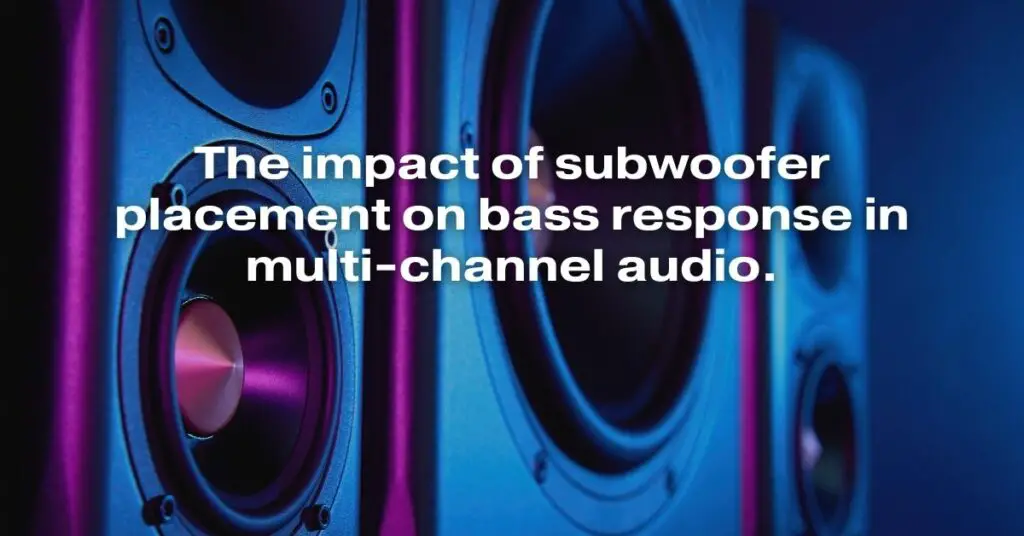In the realm of multi-channel audio, achieving optimal bass response is a crucial aspect of creating an immersive and impactful listening experience. Subwoofers, the specialized speakers responsible for reproducing low-frequency sounds, play a pivotal role in this endeavor. However, the placement of a subwoofer within a listening environment significantly influences its performance and the overall bass response.
Room Modes and Standing Waves
Room acoustics play a significant role in shaping the bass response of a subwoofer. Low-frequency sound waves, due to their long wavelengths, tend to interact with the boundaries of a room, creating standing waves. These standing waves, also known as room modes, can cause uneven bass distribution, leading to areas of excessive bass (peaks) and areas of reduced bass (nulls).
Subwoofer placement can either exacerbate or mitigate the effects of room modes. Placing a subwoofer near a wall or corner can amplify certain frequencies, leading to boomy or muddy bass. Conversely, positioning the subwoofer away from walls and corners can help reduce the prominence of room modes, resulting in a more even and accurate bass response.
Subwoofer Integration with Main Speakers
In multi-channel audio setups, subwoofers work in conjunction with main speakers to deliver a seamless and cohesive soundstage. Proper subwoofer placement ensures that the low-frequency sounds blend seamlessly with the rest of the audio spectrum, creating a unified listening experience.
Ideally, the subwoofer should be positioned in a way that complements the main speakers, taking into account the room’s layout and the listening position. In some cases, placing the subwoofer near the front speakers can enhance the integration of low frequencies, while in other cases, a more central location may be preferable.
Multiple Subwoofers for Improved Bass Distribution
In larger or acoustically challenging rooms, employing multiple subwoofers can significantly improve bass distribution and reduce the impact of room modes. By strategically placing multiple subwoofers throughout the room, standing waves can be effectively canceled out, resulting in a smoother and more consistent bass response across the entire listening area.
Multiple subwoofers also offer increased bass output and headroom, allowing for a more dynamic and impactful low-frequency experience. Additionally, multiple subwoofers can enhance the imaging of stereo bass in 2-channel systems, creating a more precise and defined soundstage.
Optimizing Subwoofer Placement
While there are general guidelines for subwoofer placement, the optimal position ultimately depends on the specific characteristics of the room and the listening preferences of the individual. Experimentation is key to finding the ideal placement for a subwoofer.
Several techniques can be employed to optimize subwoofer placement:
-
The “subwoofer crawl” method: This involves placing the subwoofer in the listening position and playing test tones while crawling around the room to identify locations with the most even and pleasing bass response.
-
Room mode analysis software: Specialized software can analyze room acoustics and suggest optimal subwoofer placement based on the room’s dimensions and characteristics.
-
Professional acoustic consultation: For complex or challenging listening environments, consulting with an acoustic professional can provide tailored advice and solutions for optimal subwoofer placement and overall room acoustics.
In conclusion, subwoofer placement plays a critical role in achieving optimal bass response in multi-channel audio setups. By understanding the principles of room acoustics, subwoofer integration, and the benefits of multiple subwoofers, individuals can effectively position their subwoofers to achieve a more immersive, accurate, and enjoyable listening experience.


